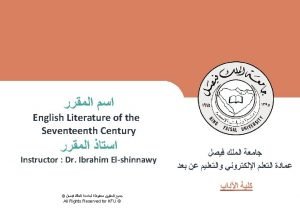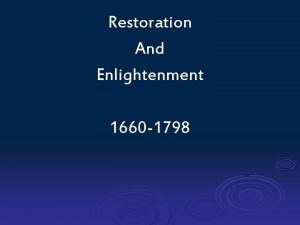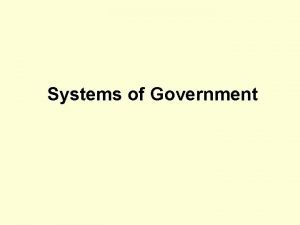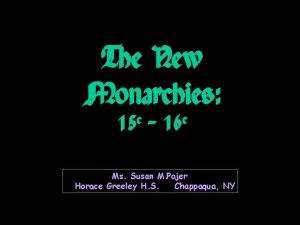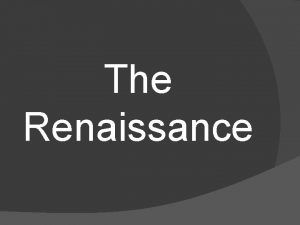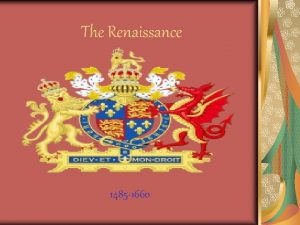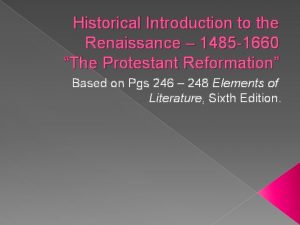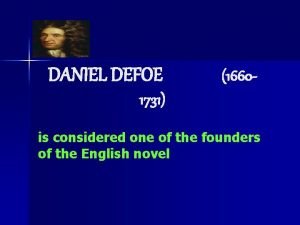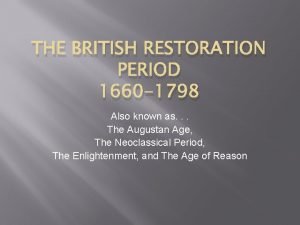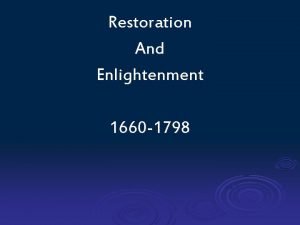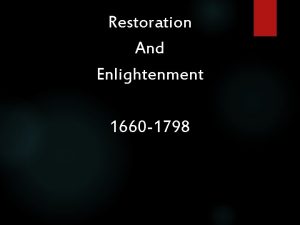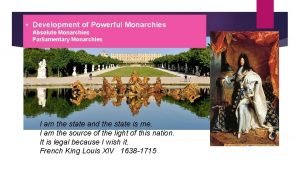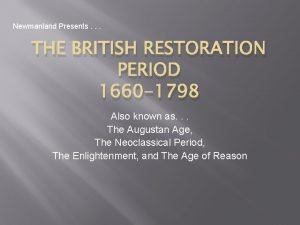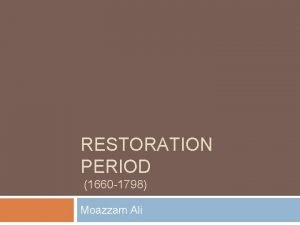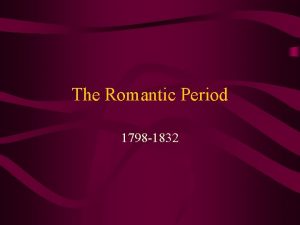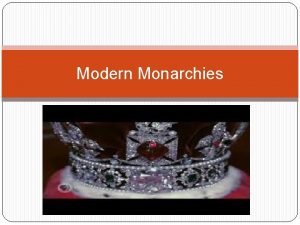RESTORATION AND THE ENLIGHTENMENT 1660 1798 I MONARCHIES










- Slides: 10

RESTORATION AND THE ENLIGHTENMENT 1660 -1798

I. MONARCHIES A. CHARLES II (1660 -1685) 1. Came out of exile in France in 1660 2. Part of Stuart line of kings/queens 3. Protestant, but held sympathy for Catholics and French 4. Parliament becomes divided into a. Royalists/Tories b. Whigs 5. Problems during his reign— Plague, London fire, Dutch attack and harm British Navy

B. JAMES (1685 -1688) 1. Catholic; fought with parliament 2. Abdicated the throne; fled to France

C. WILLIAM AND MARY (1688 -early 1700’s) 1. Mary was James’ daughter 2. William’s title was William of Orange 3. Pro-Protestant and anti-French 4. Their takeover was called “Glorious/Bloodless Revolution” 5. Brought about the Revolution Settlement

D. Queen Anne (early 1700’s) 1. Last Stuart monarch 2. Created Great Britain—union of England, Wales, Scotland, and Ireland E. George I and George II—early to mid 1700’s F. George III— 1760 -1811 1. end of peace between monarch and parliament 2. American Revolution

II. Economics A. Mainly agricultural at beginning of era B. Switched to industrial as advancements were made in both fields C. Two classes emerged toward end of era: wealthy and poor

III. Enlightenment A. Major philosophers: Kant, Locke, etc. B. Focus on scientific inquiry in all areas of life (human nature, government, religion, etc. )

IV. Neoclassic Literature A. Restoration Age (1660 -1700) 1. Satire used in drama to poke fun at Stuart court 2. The elite also enjoyed heroic drama, tragedies, comedies 3. the commoners enjoyed the Puritan traditional themes and styles

B. Augustan Age (1700 -1750) (also called Age of Pope) 1. Emphasis on Latin style of literature 2. Pope, Addison, Steele, Swift were major satirists 3. Emotionalism began to creep into drama and fiction; novel rose as an art form

C. Age of Johnson (1750 -1798) 1. Emphasis shifting to real life, nonfiction 2. Rise of Gothic novels, mysterious tales, supernatural influence 3. Move toward the Romantic toward the end of the era
